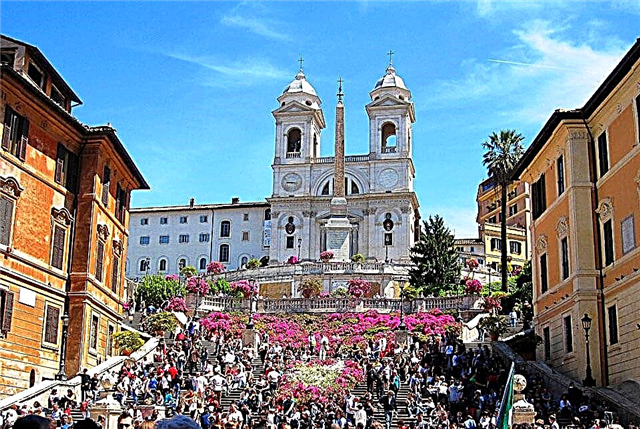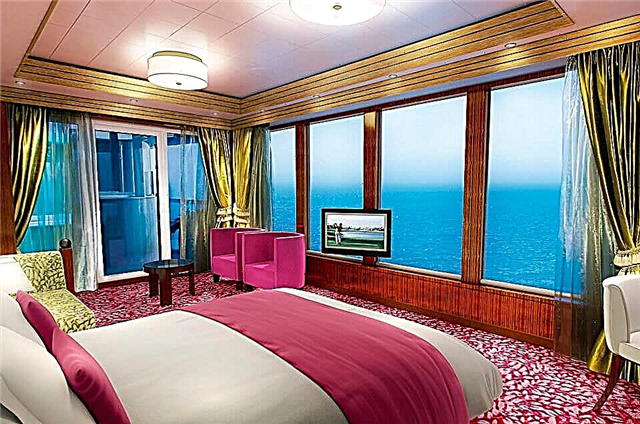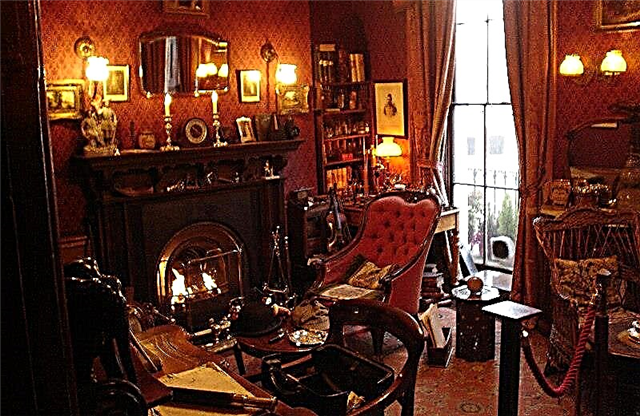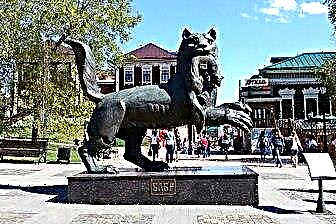The Siberian city, standing on the banks of the Angara, in the 17th century is an unknown world, and today it is a modern and developed territory. Once it all began with a tiny prison and a garrison of hundreds of people who risked at any moment to suffer from the attack of the Buryat detachments. Surprisingly, the conquerors from the west managed to withstand and win the right to remain on this land.
For more than 350 years of its existence, Irkutsk has been overgrown with architectural monuments: picturesque wooden houses and stone churches of incredible beauty (and where did the architects get their imagination from!), Monuments in honor of outstanding personalities whose fates were associated with Siberia, museums with interesting ethnographic collections - all this awaits guests who decide to visit the city. And this is not to mention the fact that the grandiose Baikal is located several tens of kilometers away, where Irkutsk people go as if they were to a dacha.

The best hotels and hotels at affordable prices.
from 500 rubles / day
What to see and where to go in Irkutsk?
The most interesting and beautiful places for walking. Photos and a short description.
"Babr"
The Türkic name for the jaguar or panther, the Yakuts call the Ussuri tiger this way. For several centuries, the figure of this beast adorns the coat of arms of Irkutsk and is a symbol of the city. In 2012, in the 130th quarter, a bronze sculpture appeared, depicting an animal in all its glory. The figure reaches 3.5 meters in height and 4 meters in length. The babr, who has risen on its hind legs, holds its prey - a fur-bearing animal in its teeth.

130th quarter
A historical building area located on the site of an 18th century suburban quarter. At that time, all buildings were erected from wood, so by the beginning of the 20th century, the area looked like an ordinary village. The decision to create the Irkutsk Sloboda was made in 2008. As part of the project, people were resettled from dilapidated housing, and dilapidated houses were restored, turning them into architectural monuments.

Count Speransky Square
The main square of the city, the history of which began more than 300 years ago. It first appeared behind the Irkutsk Kremlin and became the center of trade and festivities. At the beginning of the 19th century, Gostiny Dvor was transferred here. The square reached its present size by the end of the 19th century. In 1879, there was a devastating fire that destroyed most of the buildings; the remains of the architectural ensemble were lost during the Soviet era. Nowadays, a fountain, a chapel and a landscape park are located here.

Lower embankment of Angara
The street, located in the northern part of the historic center, is the oldest city embankment. Ever since the founding of Irkutsk, this place has been used as a pier. Gradually, with the growth of the settlement, the surrounding meadows were built up with houses and public buildings. A stone cathedral of the Epiphany was erected here in the 18th century. A large-scale reconstruction of the embankment was carried out in 2010 - 2011.

Irkutsk Museum of Decembrists
The museum exposition is located on the territory of the estates of the princes S.G. Volkonsky and S.P. Trubetskoy, who were exiled to Siberia after the suppression of the Decembrist uprising. These houses are monuments of urban wooden architecture, typical of Siberia in the 19th century. Historical interiors have been recreated inside, giving an idea of the life and life of the princely family. The collection was founded in 1970 and the collection continues to this day.

Victor Bronstein Gallery
Private art gallery, founded in 2011 by the philanthropist and businessman V.V. Bronstein. The collection contains more than 1.5 thousand paintings, sculptures and graphic drawings, which makes it the largest beyond the Urals. Literally from the moment of its foundation, the museum has been taking part in exhibitions in Russia, China, Mongolia, and Korea. The gallery exhibits belong to various areas of contemporary art.

Irkutsk Regional Museum of Local Lore
A museum institution consisting of several departments, a library and a children's center. Its expositions are very popular, as evidenced by the high attendance of 300 thousand people a year. The collection was founded with funds from merchants and nobles in 1782. In 1879, a fire broke out that destroyed the museum fund of many thousands. But four years later, the institution opened its doors to visitors again.

Drama Theater named after N. Okhlopkov
One of the oldest drama scenes in Russia, founded in the middle of the 19th century. The first troupe of the theater was a group of itinerant actors who decided to settle in Irkutsk. The modern building was erected in 1897 according to the project of V. A. Schroeter and reconstructed in 1999. It is an example of Russian classical architecture. Distinctive features of the building are good acoustics and rich decoration.

Musical theater named after N.M. Zagursky
The opera stage appeared in Irkutsk in 1941. At first, the troupe performed in a building of the early 20th century, in which a huge auditorium for more than 900 seats was equipped at that time. The repertoire was based mainly on musical comedies and classical works. The modern stage building was erected in 1990. It should be noted that the range of genres is quite wide - rock operas, musicals, ballets and operettas are held with great success.

Art Museum named after V. Sukachev
The museum collection is located in three historical mansions - two stone mansions and a two-story wooden house that belonged to the family of V. Sukachev, a public figure, collector and patron of the arts (it was on his initiative that the art gallery was founded). The exposition presents masterpieces of Russian, Eastern, Western European and Siberian art of the 15th – 20th centuries.

Museum-estate of V.P. Sukacheva
The picturesque wooden mansion, entwined with carvings like white lace, is a true masterpiece of wooden architecture. Its elegant platbands and cornices cover the facade with the finest cobwebs and create a feeling of airiness. The estate is a complex of buildings, some of which (including the main house) were restored in the 2000s. Inside there is a memorial exposition dedicated to the family of V. Sukachev.

Museum-icebreaker "Angara"
A pre-revolutionary steamer that was in service in the Russian Empire and the Soviet Union. It is one of the oldest icebreakers in the world. The ship was launched in 1900 and removed from the fleet in 1962. The ship took part in the battles of the Civil War. In 1982, the authorities decided to create a museum on board, but a year later the steamer was set on fire, and for five years it was in a deplorable state. In 1990, it was repaired and towed to the Irkutsk reservoir.
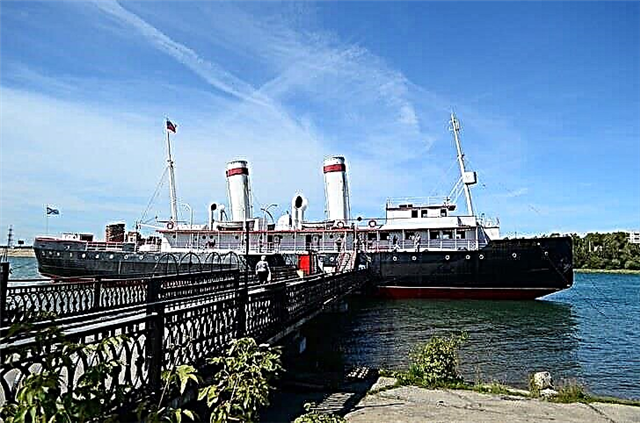
"Taltsy"
An architectural and ethnographic complex 40 km from Irkutsk, where a collection of monuments of the 17th - 20th centuries is presented. Four zones have been recreated on its territory: Russian, Tofalar, Evenk, Buryat. The basis of the exposition is made up of wooden buildings collected from the villages and towns of the region, flooded during the construction of the Irkutsk hydroelectric power station. In order to preserve the unique heritage, in 1969 it was decided to organize a museum.

House of merchants Shastin
The manor house of the late XIX - early XX centuries, known as the "lace house" thanks to the skillfully carved decor, which really resembles the finest lace. The architectural style of the building is defined as Russian Baroque, although this term is quite broad and has vague criteria. The house was saved from demolition and rebuilt in 1999 from old photographs at the initiative of the French Association for the Conservation of Architectural Monuments.

Feinberg House
I. Fainberg is a merchant and owner of gold mines, who was one of the richest and most influential people in Irkutsk at the end of the 19th century.In 1903, he built himself a stone mansion of brick and sandstone (which only very wealthy people could afford). But Feinberg did not live in the new house, but preferred to rent out its many rooms. The picturesque building is built in an eclectic style.

Railway station building
City decoration and valuable architectural monument. The building was erected in 1898 and rebuilt in 1907. Even the reconstruction of the 1960s, as a result of which the complex was significantly expanded, did not violate its historical appearance, since the new buildings harmoniously fit into the overall ensemble, which was a rarity for that time. The last restoration was carried out in 2004.

Cathedral of the Epiphany
Orthodox church of the early 18th century, located on the Lower Embankment of the Angara. In 1693, a wooden church stood in its place, which was later destroyed by fire. They decided to build a new building of stone with donations from residents and guests of Irkutsk. After the Revolution, until the 1960s, one of the bakery's shops and a hostel for workers were located inside. After 19 years of restoration, the building was transferred to the local history museum. Services resumed in 1994.

Kazan Church
An amazingly picturesque temple made of bright red bricks with a blue-and-blue roof painted with geometric patterns. The building is so unusual that it immediately attracts the attention of an observer passing by. The temple was erected at the end of the 19th century. Due to its indisputable architectural value, it did not suffer under Soviet rule, and in 1975 it was included in the list of state-protected objects.

Kharlampievskaya church
The temple was erected at the end of the 18th century to replace a wooden building that had fallen into disrepair. Before the Revolution, those who went to sea were blessed here for long voyages. In 1904, A. Kolchak, the leader of the White movement, a military man and a researcher, was married within the walls of the church. The parishioners of the temple were representatives of large trading dynasties of Irkutsk, who often financed research expeditions.

Holy Cross Church
A distinctive and original building in the Siberian Baroque style, one of the oldest Orthodox churches in the city. The church was erected in 1760; it acquired its modern appearance in the 19th century after the addition of a new chapel. Inside there is an old iconostasis from the 18th century and several hundred valuable images. Surprisingly, all this luxury was able to survive the general confiscations and devastation of the Soviet era.

Church of the Savior
The temple is located in the historical center of the city within the territory of the non-preserved Irkutsk Kremlin. In an architectural sense, the building is an early settlement church. It was one of the first stone buildings in Irkutsk. After the Revolution, the building was almost demolished, but nevertheless it was decided to adapt it for economic needs. In 1960, the church was recognized as a monument of regional significance.

Znamensky monastery
Orthodox women's monastery, one of the oldest in Siberia. It was founded in 1689. The architectural ensemble of the monastery, among other things, includes the Znamenskaya Church, a necropolis where church and public figures are buried, and a monument to Kolchak (he was shot by the Bolsheviks at the walls of the monastery in 1920). In our time, monastic life has resumed in full.

Monument to Kolchak
The monument in honor of the leader of the White movement A. Kolchak was erected in Irkutsk in 2004. The author of the project was the sculptor and national artist V. Klykov. The monument took its place at the Znamenskaya monastery, where the Supreme Ruler of Russia was supposedly shot. The figure of the admiral, fixed on a concrete pedestal, is made of bronze and reaches a height of 4.5 meters.

Monument to Alexander III
The first monument to the emperor was erected in 1908, but after the Revolution it was demolished as a hateful reminder of the centuries of tsarist oppression. The monument was restored in 2003. The sculptor A.S. Charkin worked on the new project. The figure of the king is crowned with a high pedestal and reaches 5 meters in height. On the pedestal itself are the bas-reliefs of Ermak, Count N.N. Muravyov-Amursky and M. Speransky.

Monument to Leonid Gaidai
The famous director began his career in Irkutsk. In 2012, not far from the school where he studied, a monument was erected in his honor. The sculptural group consists of the figure of Gaidai in the director's chair, carefully looking at the Experienced, Coward and Dunce and at that moment creating one of the scenes of his legendary films. The composition is very emotional and expressive, exactly reflecting the spirit of his films.

Monument to Yakov Pokhabov
Ya. I. Pokhabov - pioneer and founder of Irkutsk. In 1661, he landed with his detachment on the banks of the Angara and founded a prison. A monument in his honor was erected on the Lower Embankment in 2011; the opening was timed to coincide with the 350th anniversary of Irkutsk. The sculpture represents the figure of Jacob, dressed in a hiking suit and purposefully peering into the distance, apparently in search of a suitable place to lay the foundation for the city.

Moscow gates
The Arc de Triomphe is a copy of the building of 1813, erected in honor of the accession of Alexander I to the throne and demolished in 1928. The structure was restored in 2011 in the architectural style of the Empire and Renaissance. It is interesting that the decision to demolish the arch was made by the city duma even before the Revolution, but then the monument was preserved thanks to the petitions of citizens and public organizations.

Nerpinary
Baikal seals are unusual, amazing and funny creatures, endemic to Lake Baikal, which do not live anywhere else in the world. In the Irkutsk nerpinary, these animals put on a show for visitors: they play with a ball, draw, dance and sing. If there is no opportunity to observe them in their natural environment, then a visit to the nerpinarium is an excellent way out, especially since you can take excellent photos with seals.

Angara river
Angara is the largest tributary of the Yenisei, a great Siberian river flowing through the territory of the Krasnoyarsk Territory and the Irkutsk Region. Its length is over 1,700 km. Irkutsk is located on both banks of the waterway. In warm weather, ships and pleasure ships sail along it; in winter, she dresses in a white veil. Angara is poetically called “the daughter of Baikal”.

Lake Baikal
What epithets do not give this great lake - "gray", "mighty", "wise", "mysterious", endowing it with human properties. It is unforgivable to come to Irkutsk and not visit Baikal, especially since the nearest coast is located only 70 km from the city in the resort village of Listvyanka. The beauty of the lake does not need additional advertising; visiting this place is a dream for many tourists.





